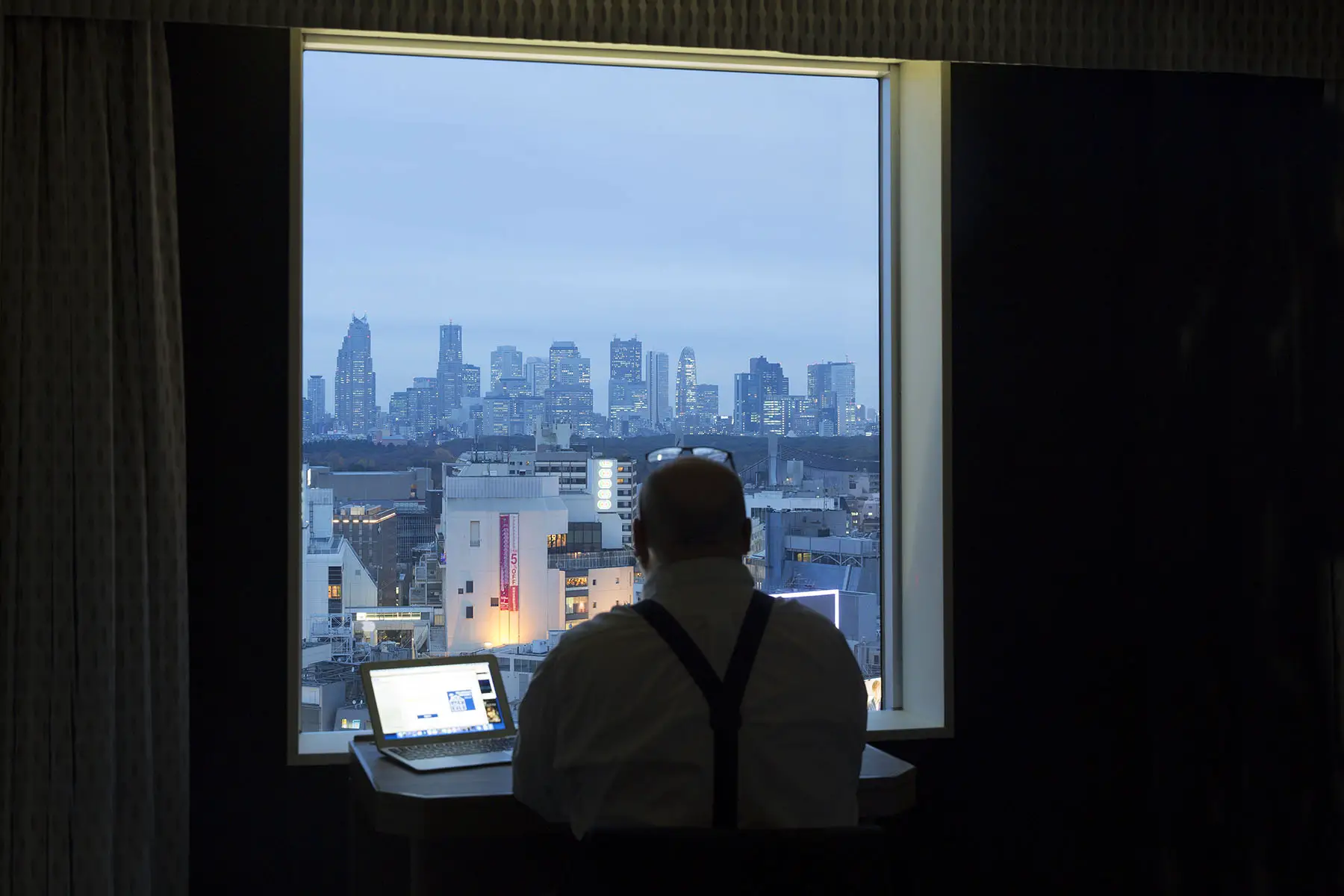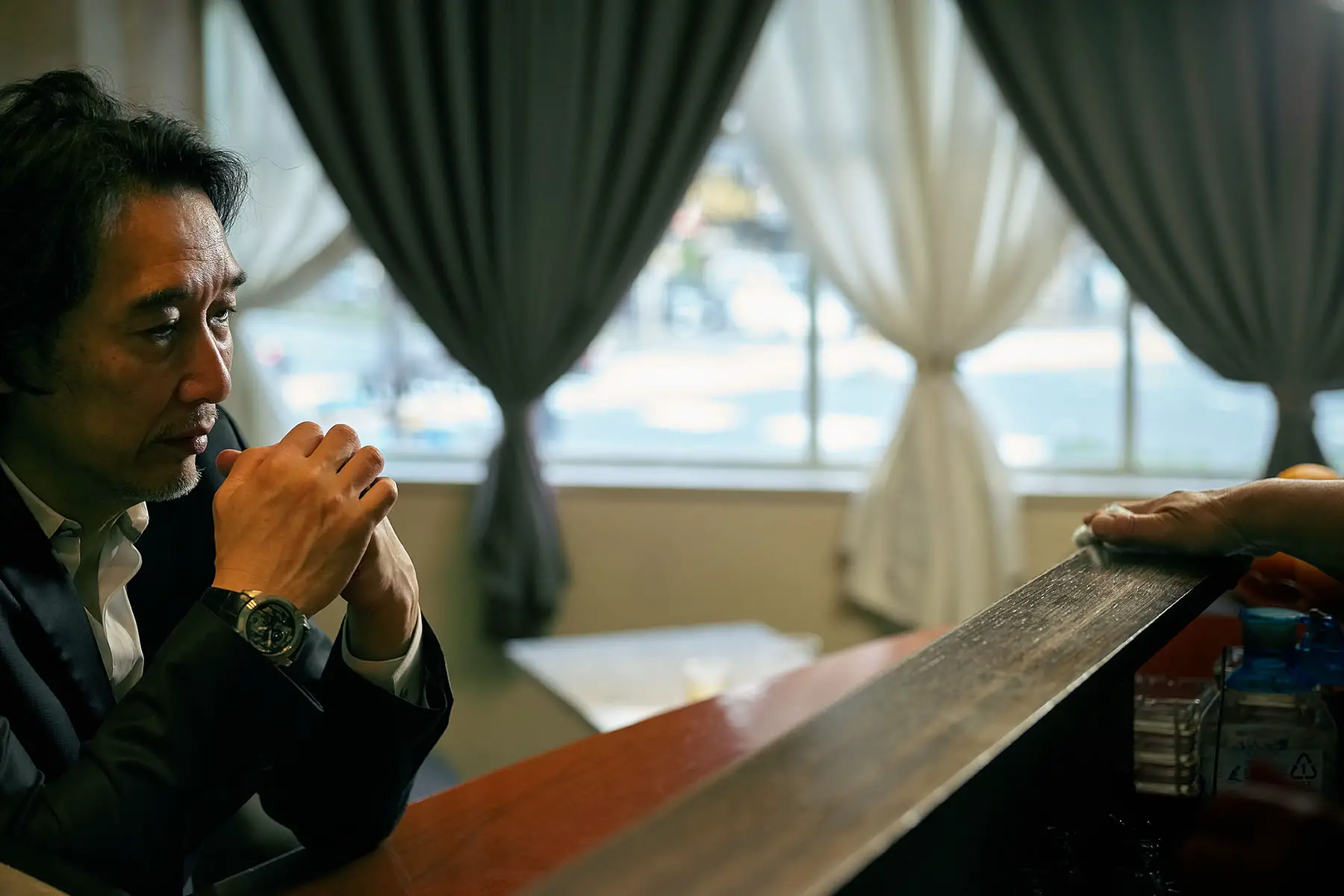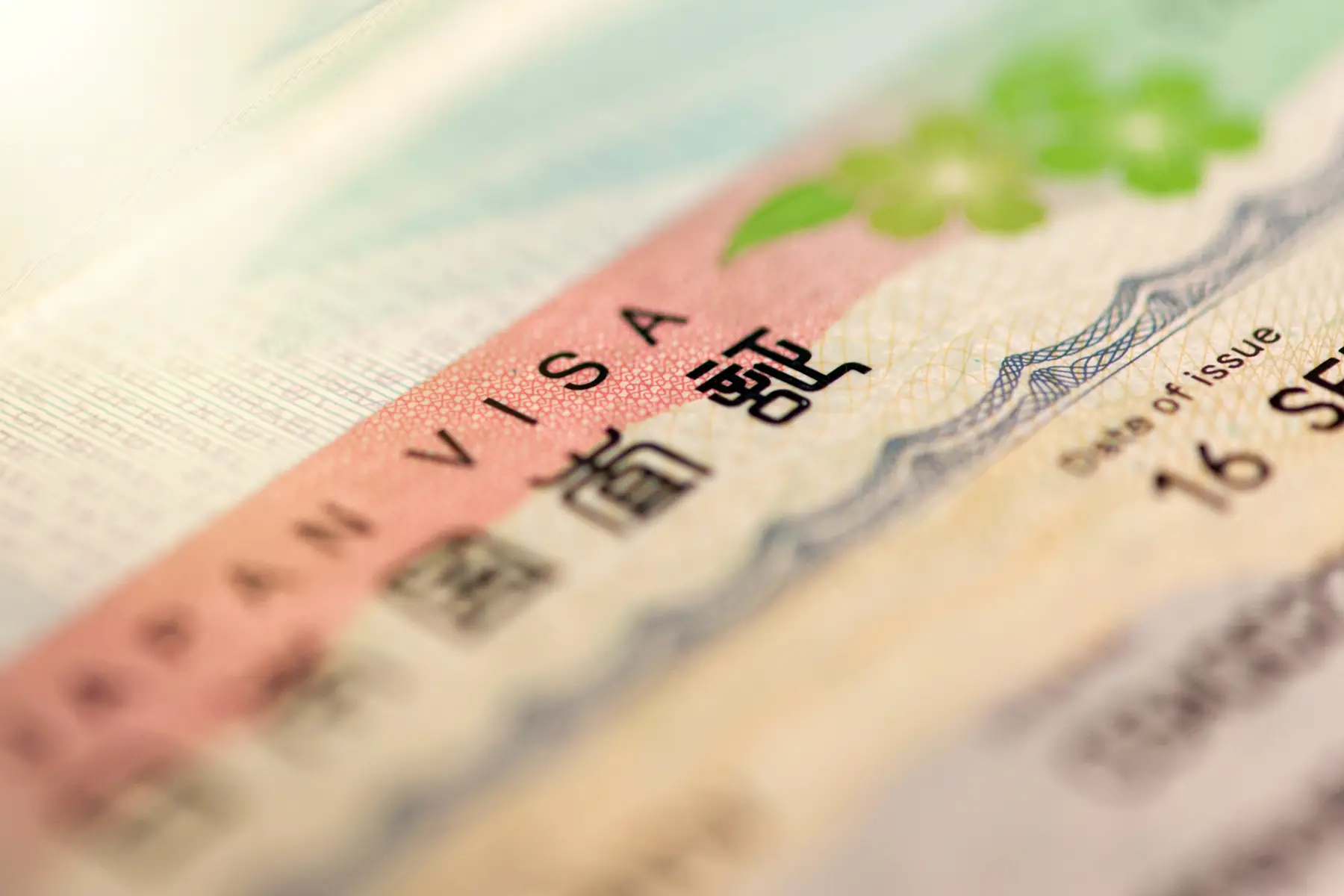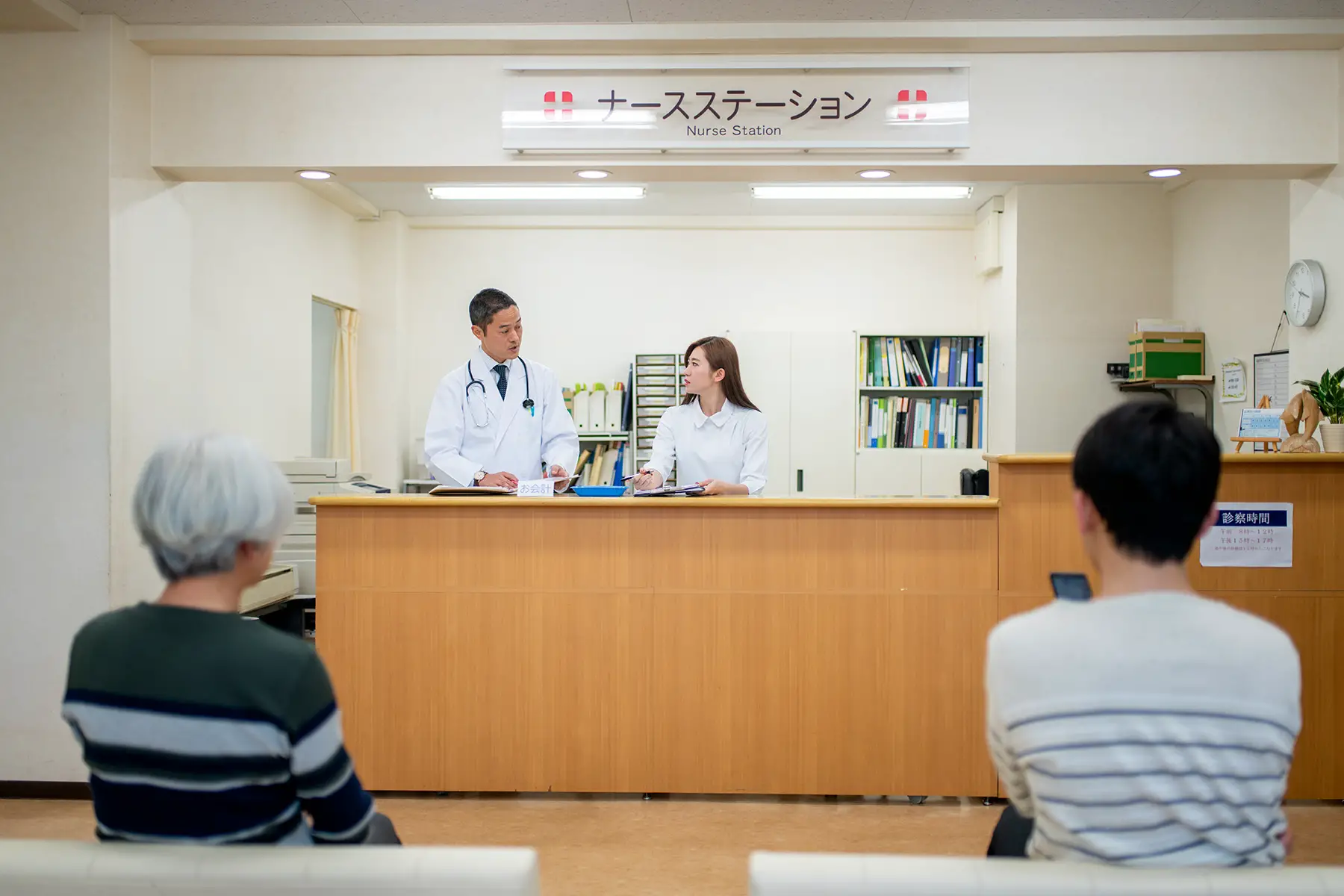If you’re looking for work in Japan or already found a job, it’s good to familiarize yourself with the existing labor laws. Newspapers from the Global North often print horror stories of long working hours in the country. Yet, Japan has strict employment laws that monitor labor standards.
Whatever your position on the work ladder, get a clear overview of your employment rights with the following sections:
- Overview of labor law in Japan
- Foreign workers – your right to work in Japan
- Japanese employment contracts
- What is the salary expectation in Japan?
- What are typical Japanese work hours?
- Paid and unpaid leave in Japan
- Parental rights in Japan
- Japanese social security and tax
- Protection from workplace discrimination
- Can you join a union in Japan?
- Health and safety at work
- Training and development in Japan
- How to terminate the employment relationship
- Company mergers and insolvencies in Japan
- Temporary, part-time, agency, and informal workers
- How to make a complaint as a worker in Japan
- Useful resources
Overview of labor law in Japan
Although Japanese labor law (労働法) is generally outlined in the country’s Civil Code, it’s not fully integrated into a single document.

Aspects of labor standards are included in Japan’s Constitution, which covers the right and obligation to work, a ban on child labor, and the worker’s right to organize, bargain, and act collectively.
There is a wealth of laws that cover contracts, wages, security, childcare, and the like, to protect the rights of employees. These include the Labor Standards Law, Labor Union Act, and Labor Relations Adjustment Law.
The non-profit organization WageIndicator Foundation ranks Japan under the Reasonable Access to Decent Work tier on its 2022 Labor Rights Index. This index surveys labor legislation around the world.
With an overall score of 72.5 out of 100, the country scores fairly well – especially in the fields of work safety, social security, and child and forced labor. However, it lacks proper regulations regarding employment security and workers’ equality.
The Ministry of Health, Labor, and Welfare (MHLW – 厚生労働省) is responsible for labor law and maintaining work standards in Japan, namely through its Labour Standards Bureau (労働基準局).
Foreign workers – your right to work in Japan
Expats looking to find a job in Japan must have a valid work visa before they can enter the country. That means you will need to have a job offer and a signed employment contract. Your employer will act as a sponsor to obtain the Certificate of Eligibility (COE – 在留資格認定証明書) that is necessary for the application process.
There are several types of work visas for a wide range of professions, including artists, performers, researchers, and journalists. These permits can be valid for any period from three months to five years. To take up a permanent position, you must apply for a highly skilled professional working visa.
Some countries are also part of the working holiday visa program. This allows candidates under the age of 30 (or 25 for some countries) to travel and work for up to one year in Japan. Although this program is not meant for seeking full-time employment, some expats will use a working holiday visa to enter Japan, find a job, and exchange it for a work visa.
Japanese employment contracts
Employment contracts may be written or verbal, with written contracts being the preferred option in Japan’s business sector. As an employee, it’s also recommended to request one to avoid any later issues.
More importantly, employers must provide a written agreement, known as a hiring notice (労働条件通知書), that states the terms of the working relationship.

Employment contracts should include the following:
- Terms of employment
- Place of employment and job description
- Start and finish time of work with details of overtime, rest periods, days off, leave, and change in shifts
- Determination, calculation, and payment of wages
- Resignation and exit policies and procedures (including grounds for dismissal)
Employment contracts are generally written in Japanese. However, the employee must be able to fully understand what they are signing, so a full translation must be provided if necessary.
Contracts are usually made binding with a personal seal (印鑑 or 判子) or a combination of seals and signatures.
Trial periods
It is very common to set a trial period (試用期間) of three to six months for new hires. After that, pending a review, the employee usually transitions to regular employment.
Fixed-term contracts
Fixed-term contracts (有期雇用) have a maximum duration of three years but are often much shorter (between six months to a year). As a result, they offer fewer rights to employees who can be easily terminated at the end of a contract.
To stop the cycle of short contract renewal, Japan brought in rules to improve job security. Under these, after five years of working on a fixed-term contract, employees must receive a permanent contract.
In general, fixed-term contracts are becoming more common in Japan and are seen as less stable. These figures are also gendered, with about 49.3% of female workers on fixed-term contracts in 2018, compared to 18% of male workers. In short, they are an advantage to an employer rather than the employee and are used as a form of probation.
Open-ended contracts
Employees prefer permanent or regular employment (正社員). It offers more employment rights, including severance pay and access to paid leave. In general, seishain positions offer excellent job security, responsibilities, and career progression. As a permanent employee, dismissal is also incredibly difficult.
All of these reasons culminate in it being both the preferred and common form of employment in Japan, but one that is also on the decline.
Freelancers in Japan
Freelancers and self-employed individuals are generally categorized as sub-contractors (業務委託) in Japan.

While freelancers cannot receive the same benefits as other employees, protections are being introduced regarding pay disputes.
What is the salary expectation in Japan?
Japan’s Minimum Wage Act was passed in 1959 with the objective of ‘improving the conditions of low-paid workers.’ However, the country doesn’t actually have an overreaching minimum wage.
Instead, minimum wages in Japan differ depending on region and industry. These are set by Minimum Wages Deliberative Councils.
As of 2023, the national weighted average wage is ¥961 per hour (or ¥38,440 per month). This is a good indicator of a general minimum wage.
A 2022 survey by the MLHW found that the average full-time monthly salary in the country was ¥311,800. This indicates a year-on-year increase of 1.4% since 1976.
Salaries vary by region, with those in the capital of Tokyo being the highest, followed by the cities of Yokohama and Osaka. To put it in perspective, Tokyo’s average monthly salary of ¥574,000 ($4,104.39) is:
- higher than Seoul ($3,296.42) and London ($3,793.34)
- less than New York City ($7,166.66)
Unfortunately, gender also significantly impacts salary and wage growth in Japan. On average, women took home 22.1% less than men in 2022. This is one of the most significant wage gaps recorded by the Organization for Economic Co-operation and Development (OECD).
What are typical Japanese work hours?
Japan has some of the longest recorded working hours in the world. A 2016 study by the Japanese government found that a quarter of all companies required employees to work over 80 hours of unpaid overtime per month.
While most official office hours are from 09:00 to 17-18:00, many employees stay much later, with some working until as late as 22:00. According to the OECD Better Life Index, 15.7% of employees work an average of 50 hours or more per week. This is much higher than the OECD average of 10%.

These excessive hours tend to be logged by Japan’s white-collar workers, or salary men (サラリーマン). This is in part due to a culture of leaving work only after the supervisor has left as well. With that said, there is a drive to improve work-life balance in the country, particularly among younger workers.
Despite this working culture, mandatory working hours are eight hours per day and 40 hours per week. Mandatory vacation days are one day per week or four days per month. Employees are entitled to a 45-minute to one-hour break for every six to eight hours worked, respectively.
Overtime should correspond with an increased wage rate of 25% to 75%, depending on the classification. Employers can also offer paid leave instead of this wage increase.
Paid and unpaid leave in Japan
Paid time off (PTO)
Both full-time and part-time workers are entitled to PTO (有給休暇). The employee’s status and longevity in the company will determine the number of leave days. You must be with a company for at least 6 months before you can claim any vacation days.
For regular full-time employees, allocated paid leave works as such:
| Years employed | 0.5 | 1.5 | 2.5 | 3.5 | 4.5 | 5.5 | 6.5+ |
| Vacation days per year | 10 | 11 | 12 | 14 | 16 | 18 | 20 |
You cannot accumulate your annual leave for more than two years. Many companies also set an expiration on paid leave at one year. Ensure you don’t lose any entitled vacation days by checking company policy. To take time off, you should apply for it in advance. Management will then decide whether or not to grant it on the chosen dates.
The country has 16 official holidays, and most companies will allow you to take these days off on top of your PTO. Most companies also voluntarily designate a holiday between 29 December and 3 January. Keep in mind that it’s not mandatory to get paid during the official holidays.
Do you get sick pay in Japan?
Despite its otherwise good social security system, sick leave does not exist in Japan. As such, employees must cover sick or rest days with vacation days. You should be careful not to reach your PTO limit and forfeit sick days as absent unpaid days.

It’s general practice to reserve some PTO in case of illness or accident.
Other forms of paid leave
There are several additional mandatory leaves of absence in Japan, including parental and childcare leave. If you are caring for an ill family member, you can also take up to five days per year of nursing care leave.
Like Spain, Japan allows women to take menstrual leave (first introduced in 1947). Despite it being an industrial right, it is often unpaid and unused in practice.
Unpaid leave
As far as Japan’s labor laws are concerned, companies and employers are only obligated to pay salaries during PTO. All other kinds of leave, including a wide range of non-mandatory leaves – like bereavement, marriage, family care, and heartbreak leave – are not regulated. They can therefore be paid or unpaid, depending on company policy.
Parental rights in Japan
There are numerous laws to protect the rights of (soon-to-be) parents, including the Law on Childcare and Family Care Leave and the Employment Insurance Act.
Your rights during your pregnancy
Both the Equal Employment Opportunity Law and the Labor Standards Act outline thorough protections for soon-to-be parents. For example, pregnant people cannot be fired during their pregnancy, while they are on parental leave, nor within 30 days of returning after pregnancy leave.
Other rights during your pregnancy include:
- Paid or unpaid time off for mandatory medical checkups
- Requesting a lighter workload, shorter working hours, and longer or more frequent breaks
- Protection from potentially harmful environments, including handling of heavy materials or exposure to biological or chemical agents
Parental leave in Japan
Maternity leave
Maternity leave (産前・産後休業) is separated into two periods.

The prenatal period begins six weeks before the due date. The post-natal period is up until the eighth week after birth. If the due date is delayed, the extra days are added to the prenatal period of maternity leave.
The new mother can also request to return after six weeks if she has a medical certificate that proves her work will have no adverse effect on her health.
Salaries during maternity leave are mostly covered by maternity allowance (出産手当金). This is available to all employees covered by company health insurance. It is not available for self-employed workers on national insurance.
Mothers will be paid roughly 66.6% of their normal monthly salary. It is calculated by dividing the average salary by 30 and multiplying by 66.6%. Some companies will offer additional programs.
As with other benefits in Japan, maternity leave is highly bureaucratized and requires many documents.
Paternity leave
Japan amended the Child Care and Family Care Leave law in 2021 to give men up to four weeks of paternity leave on up to 80% of their normal salary. The initiative was taken partly to alleviate the stress of raising a child and partly to help increase Japan’s historically low birth rate.
Some companies will allow new fathers to take up to eight weeks of flexible paternity leave, as well as childcare leave.
Shared parental leave
Parental leave is also known as childcare leave (育児休業) in Japan. It allows both men and women to take up to 12 months of paid leave following the birth of their child, or, in special circumstances, until the child turns 1.5 years.
Childcare leave works much like maternity leave, with employees receiving 2/3 of their salary for the first six months, and 50% of their salary for the following six months.
Both parents can take childcare leave together through Dad and Mom Parental Leave Plus (パパ・ママ育休プラス). Parents who are unable to find daycare are allowed to extend their parental leave for an additional year.
Parental leave for self-employed workers
Self-employed workers do not have access to paid parental leave but can claim general childcare allowances. This includes a lump-sum payment through national insurance (出産育児一時金). The benefit is meant to cover birth-related costs, rather than any work or wage-related losses.
If you own a business in Japan, you can cover parental leave with private insurance.
Parental leave for unemployed parents
There is no specific parental leave system for unemployed workers in Japan. However, there is a wide range of unemployment benefits (失業手当) that help cover the costs of birth and parenting.

All women who are pregnant or raising children under 3 years of age can extend their basic allowance (基本手当) beyond the general one-year limit.
Returning to work after your parental leave in Japan
Japanese law dictates that new mothers cannot return to work until eight weeks after they’ve given labor, except through a doctor’s note. Typically, the law does not specify anything for new fathers.
Japanese social security and tax
In Japan, social security contributions are taken out of your taxable income. They cover:
- Health insurance
- Welfare pension
- Unemployment insurance
Additional insurances – like nursing care insurance or workers’ accident compensation insurance – must be taken out privately or through an industry-specific program at work.
Childcare benefits
Japanese child allowance (児童手当) is available for parents raising children up to 15 years old. The allowance ranges from ¥10,000 to ¥15,000 per month. The allowance payout is influenced by the total household income and number of dependents. If a candidate’s income exceeds the income cap, they receive a flat rate of ¥5,000 per month.
Applications are handled by local municipal offices.
Protection from workplace discrimination
Japan has a number of anti-discrimination laws to protect people at work:
- The Labor Standards Act prohibits discrimination based on nationality, gender, social status, and belief
- The Equal Opportunities in Employment Act further forbids discrimination due to gender and sexuality, specifically against power dynamics and sexual harassment at work
- The Employment Measures Act prohibits age discrimination
- The Act to Facilitate the Employment of Persons with Disabilities protects people living with disabilities from discrimination
- Article 14 of Japan’s Constitution states that “all people are equal under the law and there shall be no discrimination in political, economic or social relations because of race, creed, sex, social status or family origin”. Although it does not mention gender, it is widely interpreted as extending to the LGBTQ+ community as well.

If you experience workplace discrimination in Japan, you can file a lawsuit against your employer in civil court or through a labor tribunal.
Can you join a union in Japan?
Under the Labor Union Act, employees are allowed to organize or join a union and perform labor union activities. However, a 2022 survey by the MLHW found that only 16.5% of employees (or less than 10 million people) were members of a labor union. At its peak in the early postwar years, the number of union members was above 55%.
The manufacturing sector has the strongest union membership. Unions can initiate strikes, although this is less prevalent in Japan than in any of the other wealthiest countries.
The three largest union federations are:
- Japanese Trade Union Confederation (日本労働組合総連合会)
- National Confederation of Trade Unions (全国労働組合総連合)
- National Trade Union Council (全国労働組合連絡協議会)
Health and safety at work
Japan’s labor laws protect against unsafe working environments. The Industrial Safety and Health Act, in particular, ensures the necessary safety measures are taken when operating potentially dangerous equipment, machinery, and any other such workplace hazard. Chapter XII of this Act details penalties for breaches of the law, which include fines and imprisonment.
The MLHW administers occupational health and organizes plans to tackle work-related health issues, including a recent drive for mental well-being at work.
Training and development in Japan
Japan does not have a formal system of apprenticeships or internships. The concept of vocational training is also somewhat novel. Instead, the Japanese working culture follows an “on-the-job” framework.
Some larger companies provide training and development, and might offer students an unpaid internship with the goal of eventual employment. This is not the norm, however.

In general, however, participation in training is low due to its lifetime-employment system. This is a traditional concept where the workforce at large firms remains permanently employed and is difficult to terminate.
How to terminate the employment relationship
Dismissal
Employers can only terminate a contract if it’s “objectively reasonable” and “socially acceptable”. These concepts are not codified but are decided by a court. Simply put, employers cannot dismiss employees:
- Who were injured at work, receive treatment, or have received treatment (at least up to 30 days after the last treatment)
- Who are pregnant or on parental or family care leave
Likewise, you cannot be dismissed for being a member of a union or a whistleblower.
The most common methods of dismissal are:
- Negotiated voluntary resignation – in most cases, employees negotiate their terms and can ask for compensation. Courts have the right to annul these so-called encouraged resignations if proven unreasonable.
- Termination for cause – in the event of severe misconduct with admissible evidence, a company can terminate an employment contract. You must receive a mandatory 30-day notice.
- Economic downturn – when a company can demonstrate severe financial issues, it may reduce the workforce as necessary
If you are unfairly dismissed, you can file a lawsuit at a labor tribunal. These are quite costly to employers and settlements usually cover at least several months’ salary.
Leaving a job voluntarily
If you’d like to resign from your job, you must inform your manager within the prescribed time frame. During that time, you can hand over your tasks and take any remaining PTO.
Employees with open-ended contracts must generally give a four weeks notice (30 days). However, company policies differ, and some may require at least three months’ notice. You should check your employment contract for additional details.
Redundancy
Termination due to redundancy is a last resort under Japanese labor law. Management must prove they have made every effort to avoid dismissal.

If you are made redundant, however, there is no mandatory redundancy pay in Japan.
Retirement
The standard retirement age in Japan is 65, but you can choose to retire from as early as 60. The earlier you retire, the less pension payout you will receive. To claim a pension in Japan, you must have contributed for at least ten years.
In reality, the working age in Japan is increasing. In 2022, 52% of seniors aged 65–69 still participated in the labor market. A year earlier, it was reported that 20 million people over the age of 75 were still employed.
Company mergers and insolvencies in Japan
Employees of a merged company retain their employment rights, terms, and conditions, and will continue as employees of the new entity.
Companies that go into insolvency (i.e., they cannot pay their debt) are not required to file for bankruptcy. You’re also not entitled to any redundancy pay.
If your employer goes bankrupt, they must issue a pre-dismissal allowance (解雇予告手当) that covers at least a month’s wages.
Temporary, part-time, agency, and informal workers
The term non-regular employees is typically used to describe any employee whose hours and duties differ from regular employees. That includes temporary, part-time, agency, and informal workers (like freelancers).
It is not very common to be a non-regular worker in Japan. Less than 31% of people aged 15-54 have a non-regular employment contract. In contrast, up to 76.4% of workers over 65 years are non-regular employees.
Besides the right to equal pay, non-regular workers generally have fewer working rights than regular employees. For example, they cannot access welfare or pension benefits. This does not apply to part-time employees with permanent contracts.
How to make a complaint as a worker in Japan
If you’ve been treated unfairly at work, you can file a complaint with your employer. Most organizations have a Human Resources (HR) department that can solve any workplace issues.

If the problem escalates further, you can file a civil lawsuit or contact the Employment Security Bureau. If a lawsuit is dismissed, you may appeal within two weeks of the decision.
Hello Work (ハローワーク) is a useful agency that operates as both an employment center, benefits center, and mediator for workplace issues. This agency has branches throughout Japan that can help with workplace disputes.
Useful resources
- Japanese Law Translation – website that offers translated versions of Japanese laws
- Japan’s Civil Code – pdf of Japan’s Civil Code in Japanese and English
- MHLW – official government website with information on labor laws in Japan










